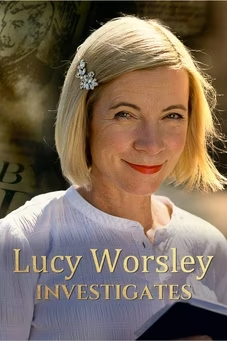Images of the Past
Mount Rushmore Models - 1927-1941
Season 14 Episode 9 | 1m 49sVideo has Closed Captions
This video clip features film and photos shot during the 14-year extent of the carving work on Mount
The film describes the process of accurately carving a scaled-up shape of Borglum's model into the mountain. The clip is an excerpt from the Historical Footprints documentary "The Men Who Made Rushmore."
Problems playing video? | Closed Captioning Feedback
Problems playing video? | Closed Captioning Feedback
Images of the Past is a local public television program presented by SDPB
Support is provided by the Friends of SDPB
Images of the Past
Mount Rushmore Models - 1927-1941
Season 14 Episode 9 | 1m 49sVideo has Closed Captions
The film describes the process of accurately carving a scaled-up shape of Borglum's model into the mountain. The clip is an excerpt from the Historical Footprints documentary "The Men Who Made Rushmore."
Problems playing video? | Closed Captioning Feedback
How to Watch Images of the Past
Images of the Past is available to stream on pbs.org and the free PBS App, available on iPhone, Apple TV, Android TV, Android smartphones, Amazon Fire TV, Amazon Fire Tablet, Roku, Samsung Smart TV, and Vizio.
Providing Support for PBS.org
Learn Moreabout PBS online sponsorshipPiano music playing in the background throughout the video.
In the studio, workers saw Borglum's models of the presidents.
They learned about a technique Borglum called pointing.
The models were 1/12th the size the finished heads would be.
Pointing men using protractor plates and plumb bobs to take precise measurements from all points on the models.
Measurements were multiplied by 12 and transferred to the mountain with giant protractor plates and plumb bobs there.
As technical as pointing may sound it could only be executed with sweat and very real risk.
First, there was the matter of reaching carvable granite.
Dynamiting away the excess stone.
When carvable granite was reached drillers roughed out an egg shape where the head would be.
Drillers relying on the pointing system were now ready to rough out facial features.
Carvers reached the sculpture's final surface by drilling a pattern of holes to the desired depth.
This was called honeycombing because of the look of the stone during the process.
Finally, a four-star drillbit bumped the surface smooth.
Borglum still had plenty of work in mind for his crew.
He wanted them to carve the presidents to the waists.
Visitors today can see where they started but did not finish Lincoln's hand.
And, in the canyon behind the heads workers began excavating the Hall of Records.
Borglum hoped the Hall would house important American documents and artifacts and be accessible by a grand stairway carved into the mountain.
Support for PBS provided by:
Images of the Past is a local public television program presented by SDPB
Support is provided by the Friends of SDPB
















